| |
|
Xiamen Oil Paintings, Wholesale Direct!
|
|
100% hand painted, 100% cotton canvas, 100% money back if not satisfaction. |
|
|
|
|
ART WORKS INDEX
A
B
C
D
E
F
G
H
I
J
K
L
M
N
O
P
Q
R
S
T
U
V
W
X
Y
Z
|
|
ARTISTS INDEX
A
B
C
D
E
F
G
H
I
J
K
L
M
N
O
P
Q
R
S
T
U
V
W
X
Y
Z
|
|
|
|
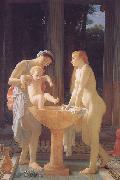 |
Marc Charles Gabriel Gleyre
|
|
Charles Gleyre (full name Marc Gabriel Charles Gleyre) (Chevilly, Vaud canton, 2 May 1806 - 5 May 1874), was a Swiss artist. He took over the studio of Paul Delaroche in 1843 and taught a number of younger artists who became prominent, including Claude Monet, Pierre Auguste Renoir, Alfred Sisley and James Abbott McNeill Whistler.
Self portraitHis father and mother died when he was eight or nine years of age; and he was brought up by an uncle in Lyon, France, who sent him to the industrial school of that city.
Going to Paris in his late teens, he spent four years in intense artistic study. The following four years Gleyre spent in meditative inactivity in Italy, where he became acquainted with Horace Vernet and Louis Leopold Robert; and six years more were spent wandering in Greece, Egypt, Nubia and Syria. At Cairo he was attacked with ophthalmia, or inflammation of the eye, and in Lebanon he was struck down by fever. He returned to Lyons in shattered health.
On his recovery he proceeded to Paris, and, establishing a modest studio in the rue de Universite, began carefully to work out the ideas which had been slowly shaping themselves in his mind. Mention is made of two decorative panels Diana leaving the Bath, and a Young Nubian as almost the first fruits of his genius; but these did not attract public attention until much later, and the painting by which he practically opened his artistic career was the Apocalyptic Vision of St John, sent to the Salon of 1840.
This was followed in 1843 by Evening, which at the time received a medal of the second class, and afterwards became widely popular under the title Lost Illusions. It depicts a poet seated on the bank of a river, with his head drooping and a wearied posture, letting his lyre slip from a careless hand, and gazing sadly at a bright company of maidens whose song is slowly dying from his ear as their boat is borne slowly from his sight.
|
|
 |
marc chagall
|
|
marc chagall(1887 to 1985)French painter, draughtsman, printmaker, designer, sculptor, ceramicist and writer of Belarussian birth. A prolific artist, Chagall excelled in the European tradition of subject painting and distinguished himself as an expressive colourist. His work is noted for its consistent use of folkloric imagery and its sweetness of colour, and it is characterized by a style that, although developed in the years before World War I, underwent little progression throughout his long career. Though he preferred to be known as a Belarussian artist, following his exile from the Soviet Union in 1923 he was recognized as a major figure of the Ecole de Paris, especially in the later 1920s and the 1930s. In his last years he was regarded as a leading artist in stained glass.
|
|
 |
Maratta, Carlo
|
|
Italian Baroque Era Painter, 1625-1713
was an Italian painter of the High Baroque period, active mostly in Rome. Born in Camerano, then part of the Papal States. He came as a boy of 12 to apprentice in the studio of Andrea Sacchi. Like Sacchi, his paintings have a classicizing tone, inspired by the works of the great painters from Parma and Bologna: Carracci, Guercino, and Lanfranco. He developed a close relationship with Sacchi till the death of his master in 1661. He worked alongside Francesco Cozza, and Domenico Maria Canuti in the decoration of the Palazzo Altieri. His first prominent work is an Adoration of the Shepherds for San Giuseppe die Falegnami in 1650. He came to establish one of the most prominent art studios in Rome of his time. Other major works are the The Mystery of the Trinity Revealed to St. Augustine (c. 1655) painted for the church of Santa Maria dei Sette Dolori, The Appearance of the Virgin to St. Philip Neri (c. 1675) now in the Pitti Palace of Florence, The Virgin with Saints Carlo Borromeo and Ignatius of Loyola and Angels (c. 1685) for the church of Santa Maria in Vallicella, and The Assumption of the Virgin with Doctors of the Church (1689) for Santa Maria del Popolo, . His numerous depictions of the Virgin earned him the nickname Carluccio delle Madonne (Little Carlo of the Madonnas). The style of Maratta is a classicized Baroque, more restrained and composed than the styles of Cortona and Carracci, thus more allied to the traditions of Sacchi, Albani, and Reni. He was one of the artists favored by Giovanni Bellori. Maratta was known for his insightful portraiture. In 1650, Maratta was introduced to pope Alexander VII, who commissioned many paintings including one of his greatest works, a painting of Constantine destroying the idols for the Baptistry of the Lateran. This work brought Maratta increased fame in the Vatican, and in 1704 Maratta was knighted by pope Clement XI. Other works include an altarpiece in the San Francesco Saverio Chapel of the Church of the Gesu, in the right transept. In 1679 or 1680, a daughter, Faustina Maratti Zappi was born to Maratta by a mistress,
|
|
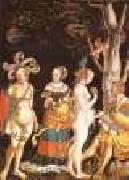 |
MANUEL, Niklaus
|
|
Swiss Northern Renaissance Painter, ca.1484-1530
was a Swiss dramaturg, painter, graphic artist and politician.
|
|
|
|
|
|
|
|
|
|
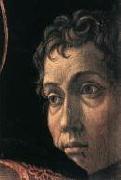 |
MANTEGNA, Andrea
|
|
Italian Early Renaissance Painter, ca.1431-1506
Italian painter and printmaker. He occupies a pre-eminent position among Italian artists of the 15th century. The profound enthusiasm for the civilization of ancient Rome that infuses his entire oeuvre was unprecedented in a painter. In addition to its antiquarian content, his art is characterized by brilliant compositional solutions, the bold and innovative use of perspective and foreshortening and a precise and deliberate manner of execution, an aspect that was commented upon during his lifetime. He was held in great esteem by his contemporaries for his learning and skill and, significantly, he is the only artist of the period to have left a small corpus of self-portraits: two in the Ovetari Chapel; his presumed self-portrait in the Presentation in the Temple (Berlin, Gemeldegal.); one in the Camera Picta (Mantua, Pal. Ducale) and the funerary bust in his burial chapel in S Andrea, Mantua, designed and probably executed by himself. His printmaking activity is technically advanced and of great importance, although certain aspects of the execution remain to be clarified.
|
|
|
|
|
|
|
|
 |
manguin
|
|
Henri Charles Manguin (Paris, 23 March 1874 - Saint-Tropez, 25 September 1949) was a French painter, associated with Les Fauves.
Manguin entered the Ecole des Beaux-Arts to study under Gustave Moreau, as did Matisse and Charles Camoin with whom he became close friends. Like them, Manguin made copies of Renaissance art in the Louvre.
Manguin was very much influenced by impressionism, as is seen in his use of bright pastel hues.
He married in 1899 and made numerous portraits of his wife, Jeanne, and their family. In 1902, Manguin had his first exhibition at the Salon des Independants and d'Automne. Many of his paintings were of Mediterranean landscapes; these represented the height of his career as a Fauve artist.
He traveled extensively with Albert Marquet throughout Southern Europe. In 1949, Manguin left Paris to settle in Saint-Tropez, where he died soon after, on September 25, 1949.
|
|
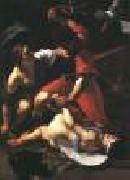 |
MANFREDI, Bartolomeo
|
|
Italian Baroque Era Painter, 1582-1622
Italian painter. In the 17th century he was known throughout Italy and beyond as Caravaggio's closest follower and his works were highly prized and widely collected. More than simply aping Caravaggio's style, Manfredi reinterpreted his subjects and rendered new ones, drawing upon Caravaggio's naturalism and dramatic use of chiaroscuro. His paintings were often praised by his contemporaries as equal to Caravaggio's and he was subsequently emulated and imitated by other Roman Caravaggisti during the 1610s and 1620s. Yet by the 18th century his works were forgotten or confused with those of Caravaggio himself,
|
|
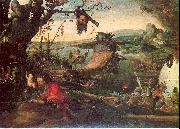 |
Mandyn, Jan
|
|
Dutch Northern Renaissance Painter, ca.1500-1560
|
|
 |
MANDER, Karel van
|
|
b. 1548, Meulebeke, d. 1606, Amsterdam
Dutch painter, poet, and writer. Born of a noble family, after much wandering he settled in Haarlem in 1583 and founded a successful academy of painting with Hendrik Goltzius and Cornelis Cornelisz (1562 C 1638). He is best known for The Book of Painters (1604), which contains about 175 biographies of Dutch, Flemish, and German painters of the 15th C 16th centuries; it became for the northern countries what Giorgio Vasari's Lives of the Painters had been for Italy.
|
|
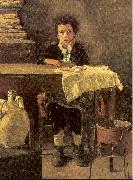 |
Mancini, Antonio
|
|
Italian Academic Painter, 1852-1930
Italian painter. He entered the Istituto di Belle Arti, Naples, at the age of 12; while still an adolescent he produced accomplished works such as Head of a Young Girl (1867; Naples, Capodimonte). On his graduation in 1873, Mancini, together with Francesco Paolo Michetti and Vincenzo Gemito, was at the forefront of VERISMO in Neapolitan art. Sharing a studio with Gemito, he painted the street boys, musicians and dancers of Naples, creating an anti-academic, popular art. His patron, Albert, Count Cahen of Antwerp (1846-1903), encouraged him to visit Paris in 1875, where he met Manet and Degas. After a second visit in 1877
|
|
|
|
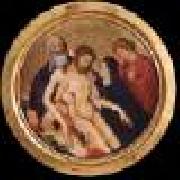 |
MALOUEL, Jean
|
|
Netherlandish Gothic Era Painter, ca.1365-1415
North Netherlandish painter, active in Burgundy. He was the son of the heraldic artist Willem Maelwael and uncle of the Limbourg brothers. First recorded as a painter in 1382, he is then documented on 20 September 1396 for a commission to provide designs for textiles with decorative armorial bearings for Queen Isabeau of Bavaria, wife of Charles VI, for which he received payment on 27 March 1397. By 5 August 1397 he was in Dijon, where he succeeded Jean de Beaumetz as court painter and Valet de Chambre to Philip the Bold, Duke of Burgundy. Malouel was highly paid, and his annual pension was considerably more than that of Beaumetz or of the sculptor Claus Sluter. One of the first works Malouel produced for the Duke was a painting of the Apostles with St Anthony (untraced), paid for on 11 November 1398, which the Duke is known to have kept in his private oratory. On 18 March 1398 wooden supports were purchased for Malouel to paint five large altarpieces for the Charterhouse of Champmol, outside Dijon. The subject-matter of the paintings is not specified in the document, although the dimensions of the panels are given. The Martyrdom of St Denis (Paris, Louvre; for illustration see BELLECHOSE, HENRI) has been identified as one of these five panels, on the basis of its possible provenance and its dimensions, which correspond approximately to those given in the document. In May 1416, however, Henri Bellechose received pigments to 'perfect' a painting of the Life of St Denis, and this document, in conjunction with the earlier one, has been interpreted to suggest that Bellechose completed a work left unfinished by Malouel.
|
|
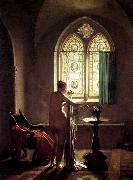 |
MALLET, Jean-Baptiste
|
|
French Painter, 1759-1835,French painter. A pupil of Simon Julien in Toulon, he was then taught by Pierre-Paul Prud'hon in Paris. He exhibited at every Salon between 1793 and 1827, obtaining a second class medal in 1812 and a first class medal in 1817. He executed very few portraits (Chenier, Carcassonne, Mus. B.-A., is an exception), preferring to paint nymphs bathing and graceful classical nudes such as the Graces Playing with Cupid (Arras, Abbaye St Vaast, Mus. B.-A.). He established his reputation with gouache genre scenes of fashionable and often libertine subjects, always elegant and refined, in the style of Louis-Philibert Debucourt and Louis-Leopold Boilly, and remarkable for the delicacy and brilliance of their brushwork: for example At the Laundry Maid's and the Painful Letter (both Paris, Mus. Cognacq-Jay). They reveal a knowledge of 17th-century Dutch painting in the treatment of details (transparent crystal, reflections on silk or satin) as well as the choice of themes: Military Gallant (Paris, Mus. Cognacq-Jay). Mallet's meticulously precise paintings are one of the best records of fashionable French furnishings and interiors at the end of the 18th century and the beginning of the 19th.
|
|
|
|
|
|
|
|
 |
Malbone, Edward Greene
|
|
American Miniaturist, 1777-1807
.American miniature painter. Like his boyhood friend Washington Allston, he was encouraged in his artistic pursuits by Samuel King, who lent him engravings to study. In autumn 1794 Malbone set himself up as a miniature painter in Providence, RI, where he worked for two years, achieving almost immediate success. His earliest miniatures, such as that supposedly of Nicholas Brown (1794; New York, NY Hist. Soc.), although somewhat primitive, demonstrate his precosity. The sitters' faces are modelled with a stippling technique and chiselled planes; their outlines are distinct and crisp. These first compositions all include a conventional portrait background, usually a red curtain pulled back to reveal a blue sky. Despite the laboured technique, they are lively, direct and sensitive. During the second half of the 1790s Malbone travelled the eastern USA in search of commissions. He renewed his friendship with Allston in Boston and later visited New York and Philadelphia. In 1801 he was in Charleston, SC, where he befriended the miniature painter Charles Fraser, on whose work he had a strong influence. He developed a brilliant technique of delicate, barely perceptible crosshatching, using interwoven lines of pale colours to create graceful forms.
|
|
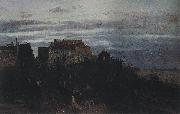 |
Maksymilian Gierymski
|
|
Gierymski (Warsaw 1846 - Reichenhall, Bavaria 1874) was a Polish painter, specializing mainly in watercolours. He was the older brother of painter Aleksander Gierymski.
As a seventeen-years-old boy, he participated in the January Uprising. He was educated at the Warsaw Drawing School initially, but then received a government scholarship in 1867 and went to study at the Academy of Fine Arts in Munich. He became one of the leading painters of the Munich realistic school. Initially best known for this battle paintings, he also created many landscape paintings, especially of southern Poland, which he visited several times.
Successful western Europe completely, he did not gain approval nor popularity in Poland of the 19th century, although he sent paintings to exhibitions in Warsaw regularly from 1968 on. He did however win awards at exhibitions in Munich (1869) and in Berlin (1872).
|
|
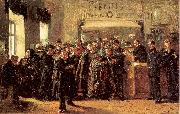 |
Makovsky, Vladimir
|
|
Russian, 1846-1920
Painter, brother of Konstantin Makovsky. He studied at the Moscow School of Painting, Sculpture and Architecture from 1861 to 1866 under Sergey Zaryanko and other artists. From 1872 Makovsky was a member of the WANDERERS (Peredvizhniki). In his early pictures, Makovsky usually portrayed contemporary manners and morals in a spirit of gentle irony, as in the Lovers of Nightingales (1872-3; Moscow, Tret'yakov Gal.). Such works reveal Makovsky's skill in defining precisely and carefully the role of each figure in the scene. In the mid-1870s Makovksy began to concentrate on the central theme of most of his subsequent work: the glaring social contrasts of Russian life.
|
|
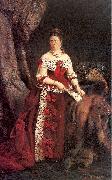 |
Makovsky, Konstantin
|
|
Russian, 1839-1915
He produced historical and social scenes, as well as being a portrait painter of some renown, although his significance lies more in the role he played as a founder-member of the WANDERERS art society in late 19th-century Russia. He studied first at the Moscow School of Painting and Sculpture (1851-8), which had been co-founded by his father Yegor Ivanovich Makovsky (1800-86), under Mikhail Ivanovich Skotti (1814-61) and Sergey Konstantinovich Zaryanko, then from 1858 to 1863 at the Petersburg Academy of Arts. In 1862 he was awarded a Minor Gold Medal, but the following year, together with 13 other students, Makovsky rebelled against the theme set for the Grand Gold Medal competition and left the Academy with the title of Artist of the Second Degree. In 1863 he joined the Petersburg Artel of artists, the forerunner of the Wanderers and the most potent symbol of the break with classical tradition. The reversal of official policy that this engendered led to his being made an academician in 1867, in 1869 a professor and in 1898 a full member of the Academy. As a member of the Wanderers, Makovsky was most notable for his new subject-matter, namely the common people. However, he split with the society in 1883 and by 1891 had become a member of the newly formed and more Salon-orientated St Petersburg Society of Artists, of which he was subsequently to be president. Makovsky often veered towards sentimentalism, giving his works a cloying pathos, as in his portrait of the Stasov Children (early 1870s) and Children Fleeing the Storm (1872),
|
|
 |
Makart, Hans
|
|
Austrian Academic Painter, 1840-1884
Austrian painter. He studied (1860-65) at the Akademie in Munich under the history painter Karl Theodor von Piloty whose influence is evident in Makart's Death of Pappenheim (1861; Vienna, Hist. Mus.). Makart visited London and Paris in 1862 and Rome in 1863. The Papal Election (1863-5; Munich, Neue Pin.) reveals Makart's skill in the bold use of colour to convey drama as well as his virtuoso draughtsmanship. Two decorative triptychs, Modern Cupids (1868; Vienna, Zentsparkasse), and the Plague in Florence (1868; Schweinfurt, Samml. Schefer), brought Makart both fame and disapproval (mostly because they lacked a literary original) when exhibited in Munich in 1868. His plan for the second work
|
|
 |
majestas domini
|
|
Christ in Majesty, or Christ in Glory, in Latin Majestas Domini, is the Western Christian image of Christ seated on a throne as ruler of the world, always seen frontally in the centre of the composition, and often flanked by other sacred figures, whose membership changes over time and according to the context. The image develops from Early Christian art, which directly borrowed the formulae of depictions of the enthroned Roman Emperor. In the Byzantine world, the image developed slightly differently into the half-length Christ Pantocrator, "Christ, Ruler of All", a usually unaccompanied figure, and the Deesis, where a full-length enthroned Christ is entreated by Mary and St. John the Baptist, and often other figures. In the West, the evolving composition remains very consistent within each period until the Renaissance, and then remains important until the end of the Baroque, in which the image is ordinarily transported to the sky.
|
|
|
|
|
|
|
|
|
|
|
|
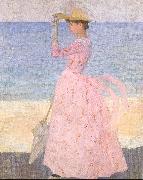 |
Maillol, Aristide
|
|
French Art Nouveau/Nabi Sculptor, 1861-1944
French sculptor, painter, designer and illustrator. He began his career as a painter and tapestry designer, but after c. 1900 devoted himself to three-dimensional work, becoming one of the most important sculptors of the 20th century. He concentrated almost exclusively on the nude female figure in the round, consciously wishing to strip form of all literary associations and architectural context. Although inspired by the Classical tradition of Greek and Roman sculpture
|
|
 |
magritte
|
|
Rene Francois Ghislain Magritte (21 November 1898 -- 15 August 1967) was a Belgian surrealist artist. He became well known for a number of witty and thought-provoking images. His intended goal for his work was to challenge observers' preconditioned perceptions of reality and force viewers to become hypersensitive to their surroundings.
|
|
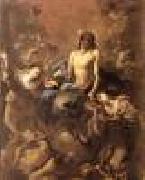 |
MAGNASCO, Alessandro
|
|
Italian Rococo Era Painter, 1667-1749
Painter and draughtsman, son of (1) Stefano Magnasco. He did not study with his father, who died when he was a small child. He went to Milan, probably between 1681 and 1682, and entered the workshop of Filippo Abbiati (1640-1715). His Christ Carrying the Cross (Vitali, priv. col., see Franchini Guelfi, 1987, fig. 238) faithfully repeats the subject and composition of Abbiati's painting of the same subject (Pavia, Pin. Malaspina). Alessandro Magnasco's early works were influenced by the harsh and dramatic art of 17th-century Lombardy, with dramatic contrasts of light and dark and livid, earthy tones, far removed from the bright, glowing colours of contemporary Genoese painting. The depiction of extreme emotion in the St Francis in Ecstasy (Genoa, Gal. Pal. Bianco) was inspired by Francesco Cairo's Dream of Elijah (Milan, S Antonio Abate). However, Magnasco was already expressing himself in a very personal manner, with forms fragmented by swift brushstrokes and darting flashes of light. The Quaker Meeting (1695; ex-Vigan? priv. col., see Franchini Guelfi, 1991, no. 18) is one of his first genre scenes. In this early period he specialized as a figurista, creating small human figures to be inserted in the landscapes and architectural settings of other painters. He also began collaborating with the landscape painter Antonio Francesco Peruzzini, with a specialist in perspective effects,
|
|
|
|
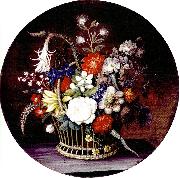 |
magdalene margrethe barens
|
|
Magdalene Margrethe Bärens, född 1737, död 1808, var en dansk konstnär; hon blev den första kvinnliga konstnären i Danmark som valdes in i den danska konstakademin år 1780.
Hon var en av de få kvinnliga konstnärerna kända i Skandinavien före 1800-talet, tillsammans med Ulrika Pasch i Sverige och Helena Arnell i Finland. I Danmark var även Johanne Marie Fosie känd under samma tid.
|
|
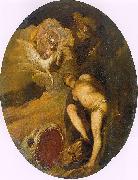 |
Maffei, Francesco
|
|
Italian Baroque Era Painter, 1605-1660
Italian painter. He probably trained with his father, Giacomo Maffei, before joining the workshop of the Maganza family in Vicenza. His early works, such as the Ecce homo (ex-Dianin priv. col., Padua, see Pallucchini, 1981,), were influenced by the eclectic style, between Veronese and the Bassani, of Alessandro Maganza. The St Nicholas and the Angel (1626; Vicenza, S Nicola da Tolentino), with colours like those of Veronese, yet lighter, suggests Maffei's rapid development of an independent style that is both rugged and moving. His interest in narrative, already evident in scenes from the Life of St Cajetan (Vicenza, S Stefano), was developed in the later Martyrdom of the Franciscan Minors at Nagasaki (Schio, S Francesco), which is datable to about 1630. Here, the contrast between the pale, silvery tones of the background and the darker foreground figures is derived from Tintoretto, but the exaggerated Mannerist treatment of the main figures also recalls the art of such French engravers as Jacques Bellange and Pierre Brebiette. At the same time there is also an echo of the extreme stylizations of Giovanni Demio.
|
|
|
|
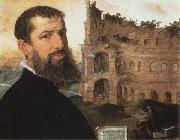 |
Maerten van heemskerck
|
|
Dutch Northern Renaissance Painter, 1498-1574
Dutch painter, draughtsman and print designer. He was among the second generation of Netherlandish artists to travel to Italy, where he was profoundly affected by the work of contemporary artists in Rome and by the examples of Classical sculpture to be seen in the city (see ROMANISM). On his return to the north, van Heemskerck had a long and successful career. His extensive oeuvre (over 100 paintings) comprises large altarpieces, portraits and smaller works (with both religious and mythological subjects). He also produced a vast number of drawings for prints. He helped spread the influence of Michelangelo and Giulio Romano in the northern Netherlands, through his strong, monumental style, with much emphasis on anatomical detail. He was thus an important figure in the dissemination of late Mannerism in northern Europe
|
|
|
|
 |
Maella, Mariano Salvador
|
|
Spanish Painter, 1739-1819
Spanish painter and draughtsman. He was the son of a Valencian painter of the same name, and in 1751 he went to Madrid, where he studied drawing and modelling under the sculptor Felipe de Castro for two years. However, he felt painting to be his vocation and joined the students directed by Antonio Gonzelez Velezquez at the Real Academia de S Fernando, where he completed his studies in 1757.
|
|
|
|
|
|
|
|
 |
Maclise, Daniel
|
|
Irish Painter, 1806-1870
Irish painter, active in England. He grew up in Cork where his father had set up as a shoemaker after discharge from the British army. In 1822 Maclise went to the Cork Institute where he began to draw from the newly arrived collection of casts made after the antique sculpture in the Vatican, laying the foundation of the strong draughtsmanship that characterizes his mature work. Richard Sainthill, antiquary and connoisseur, encouraged Maclise and introduced him to local literary and artistic circles, which were influenced by the Romantic movement and interested in Irish antiquities and oral traditions. Maclise was a central figure in this early phase of the Irish revival, and maintained an interest in Irish subject-matter throughout his career; in 1833 he painted Snap Apple (Mrs Cantor priv. col.), and in 1841 contributed illustrations to Samuel Carter Hall's Ireland: Its Scenery and Character. When Sir Walter Scott visited Cork in 1825, Maclise made a sketch of him that was lithographed, and that inaugurated his public career.
|
|
|
|
 |
Machuca, Pedro
|
|
Spanish, approx. 1490-1550
Spanish painter and architect. The form of his signature (Petrus Machuca, Hispanus. Toletanus ...) on his earliest known work, the Virgin of Succour (1517; Madrid, Prado), suggests he was active at an early age in Italy. On the basis of the style of that work, a number of frescoes in the Vatican have been attributed to him, including Isaiah Blessing Jacob. Other works from the same period that have been attributed to him include a copy (Paris, Louvre) of the destroyed Battle of Anghiari by Leonardo da Vinci and two paintings of the Virgin and Child
|
|
|
|
|
|
|
|
|
| Wholesale China Oil Painting Wholesale Oil Painting China Xiamen Portrait Reproduction on canvas Chinese Oil Painting Wholesale USA Oil Painting |
|
|
|
|
|